Truly discovering all the Land of Fire and Ice has to offer can only be done by driving our breathtaking, diverse, and contrasting terrain. No one to tell you where to go, what to do, where to stop, or how long to stay – it’s just you, the open road, and an entire island to discover. You can elevate your Icelandic road trip even more by driving in Iceland with a campervan!
Any avid vanlifers will tell you that exploring with a campervan is not just the convenient and affordable option. It also allows you to really become part of your surroundings as you immerse yourself in the landscape (even during overnight stays). So, if this sounds like an adventure you’d like to take on, this article is for you. We tell you everything you need to know about driving in Iceland with a campervan so you can properly plan, prep, and chase adventure with peace of mind.
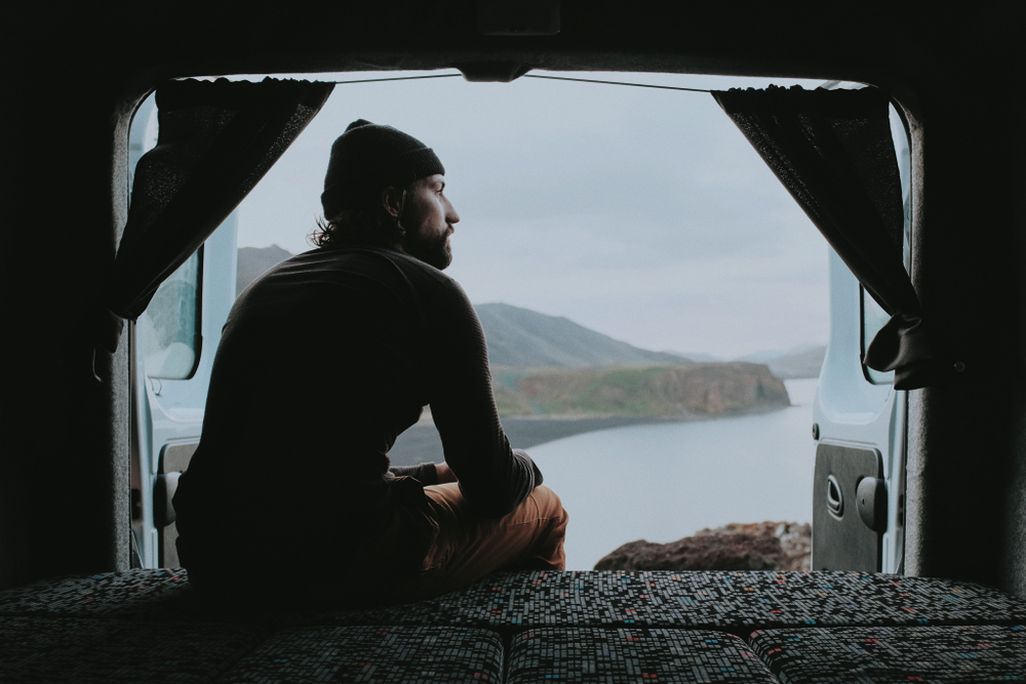
1. Why Explore Iceland by Campervan?
There are many perks to cruising the island in a campervan, with the most important being:
You’re the Only One in Charge of Your Itinerary
When you’re traveling through Iceland in a campervan, there’s no one telling you where to go and what to do, as is the case with a guided tour. You are free to compile your trip itinerary as you see fit (often including hidden gems not included on mainstream tourist tours), you can add and edit your itinerary as you go, and make impromptu stops whenever you feel like it.
You’re in Complete Control of Your Time
This is another luxury that guided tours don’t afford you. With a campervan road trip, you can decide how much time you spend at a specific stop. Is the waterfall not living up to your expectations? Well, you don’t have to wait for Mary and Joe to finish their 1000-photo Instagram photoshoot; you can just leave.
Has Reynisfjara just completely blown your mind with its dramatic black basalt cliffs, black beach stretching out for kilometers with breathtaking views over the ocean, and its weird and wonderful rock formations? Well, there’s no reason you can’t extend your visit from the planned 1 hour to half a day. You’re the ultimate captain of your clock.
You Can Completely Immerse Yourself in the Landscape You’re Exploring
As we already touched on, driving through Iceland yourself gives you a different perspective and first-hand experience of the incredible surroundings. But having a campervan simply deepens this immersive experience.
Some of the overnight spots, such as the Skogar Campsite, will literally have some of our most famous natural wonders on your doorstep! Imagine waking up in the morning and looking out the window onto the black sand beaches of Vik, or a gigantic glacier topping majestic mountains. This experience just hits different in a campervan compared to a more traditional brick-and-mortar stay.
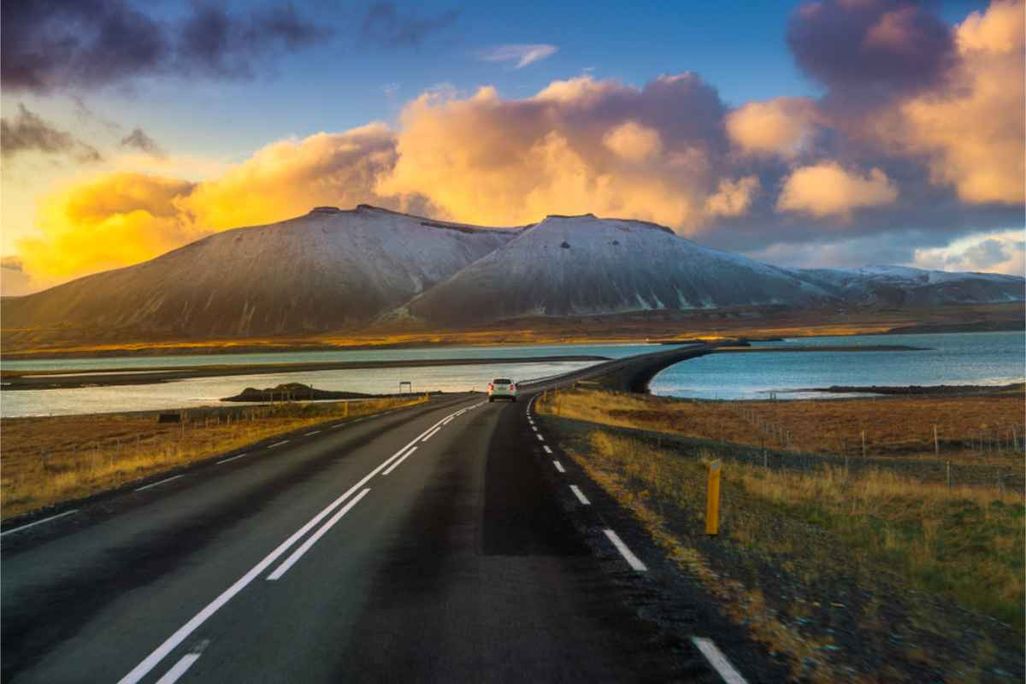
It Makes for the Most Affordable Trip
This is a no-brainer. If you were planning on just doing guided tours, you’d not only miss out on a lot, but your wallet would definitely take a hit. Booking a spot on a specific excursion or activity is one thing, but solely relying on tours charging between $100 and $300 per person to explore the island? Not unless your surname’s Hilton, I’m afraid.
And even if you plan on road-tripping through Iceland in your own rental car, you’re looking at daily rental fees, gas, as well as accommodation costs (which can range from $80 to $500+ per person per night). With a campervan, you’ll still have the rental and gas expenses, but you’ve essentially already sorted your accommodation.
With campervan parking/camping costs being an average of between $10 and $20 per night, there simply is no comparison between a campervan road trip and an old-school traditional road trip version. If you then also take advantage of seasonal discounts and our super-saver Camping Card, there’s no limit to the amount of money you could be saving.
It Gives You Options
A campervan road trip is less restrictive than a traditional road trip that relies on accommodation, especially during our busy seasons. That’s because you may have a choice of 3 hotels, guesthouses, or hostels in a specific area, but you’ll have 1 or 2 campsites offering a number of stands.
The odds of a hotel telling you they’re fully booked are far greater than a campsite having to show you the proverbial door. For this reason, you also don’t need to worry if plans change and you suddenly have to find accommodation for the night; just drive to the nearest campsite.
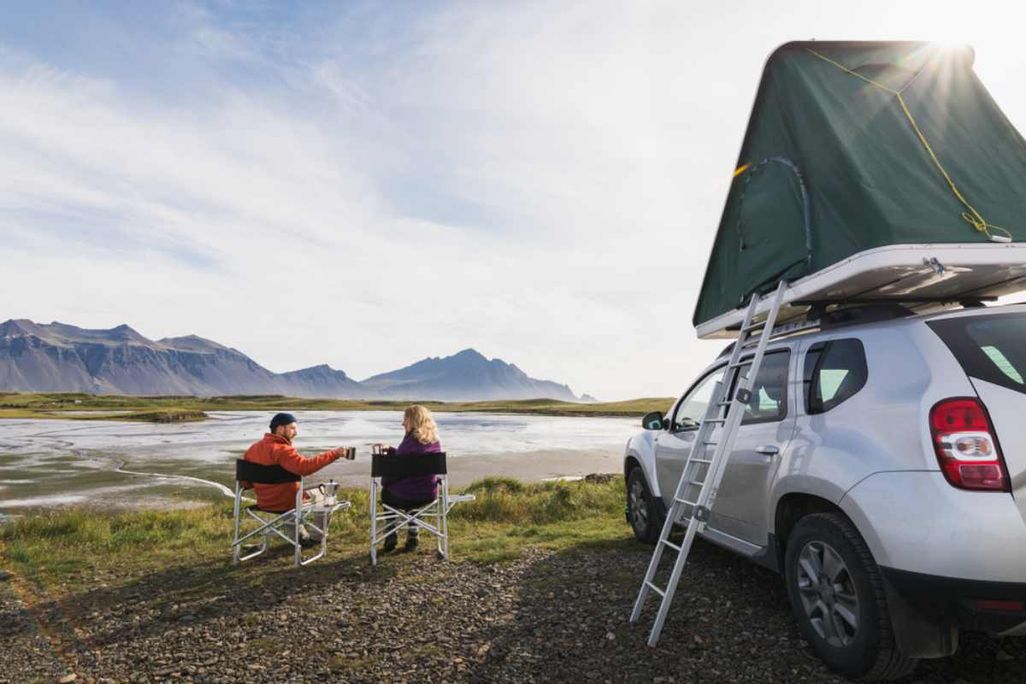
You Can Go Camping in Comfort
Wanna experience the great, big outdoors here in the Land of Fire and Ice, but not a fan of the Survivor-like outdoor lifestyle? Then a campervan can give you the best of both worlds, and you can go camping in comfort!
A Campervan Extends Your Camping Shelf Life
Look, unless you’re Bear Grylls, you’re not going to be pitching your tent in Iceland when the island starts inching its way toward winter. However, with a campervan, which provides more protection against the elements, you can even camp right through the winter at one of our all-year-round campsites.
2. What to Know Before Driving in Iceland
The following are important to know before you can book your camper and head out on the road here in Iceland:
Essential Documents and Requirements
Everything from renting to driving a campervan here in Iceland will require certain documentation (some of which many really get their wires crossed about). Here’s what you’ll need:
- A valid driver’s license (irrespective of whether you’re bringing an International Driver’s Permit with you or not). Also, please note that you’ll only be allowed to rent a vehicle in Iceland if you’re 20+ years old and have had your license for at least a year. If you’re thinking of renting a larger vehicle or 4x4, you may even be required to be between 23 and 25 years of age (depending on the rental agent).
- An International Driver’s Permit (ONLY if your driver’s license is not in Roman letters used in the English language, making it difficult to understand).
- Your passport or ID card (for EU citizens).
- A credit card for rental holds and payments. There’s something incredibly important to note here, though. In Iceland, you will need a credit card with a chip and PIN, so please chat to your bank beforehand to get this sorted.
- Proof of insurance. You’ll need proof of your travel insurance, and although your rental package will already include our mandatory coverage, you might need to chat with your rental agent and discuss your specific itinerary and routes to ensure you don’t need additional insurance coverage.
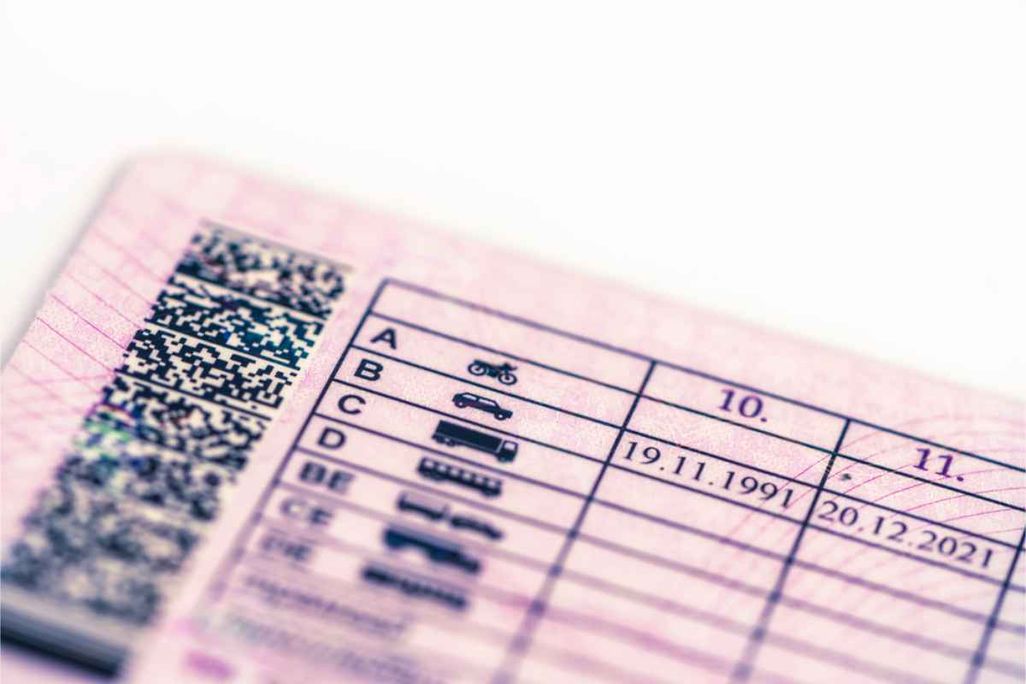
Choosing the Right Campervan for Your Trip
The right campervan is a subjective concept and will heavily rely on multiple factors, such as the season and the routes you plan on taking. Below will help guide you in the right campervan direction:
Smaller 2WD Campervans with Just the Basics
These are campervans such as the NV-200/Kangoo/Doblo or the VW Caddy Beach Minicamper. These are the type of campers that only have the bare basics, and conversion is the name of the game with seats folding into beds, slide-out drawers acting as tables, etc.
There are no bathrooms or kitchen facilities. If you’re lucky, your rental agent will give you the option of having a gas stove and some camping cooking gear.
Will It/Won’t It Work for You?
- These are 2-wheel drive vehicles with not a lot of clearance, so they can only be driven on paved and well-maintained roads, such as the Ring Road.
- These vehicles only have sleeping space for two, so they’ll only work for those planning on traveling as a couple or two friends who don’t mind sharing intimate space with one another.
- Due to the smaller size of the vehicles, storage space is also extremely limited, so this won’t be the trip that you pack and bring along everything, including the kitchen sink.
- Since these vehicles don’t come with bathroom or kitchen facilities, you’ll need to be slightly more selective with your overnight stays. You’ll need to ensure that the campsites have these facilities when you need them.
- The vehicle’s size makes it perfect for exploring cities and towns, zipping in and out of smaller parking spots or traversing narrow streets.
- They are the most fuel and cost-efficient options, so they’re perfect for those traveling on a tight budget.
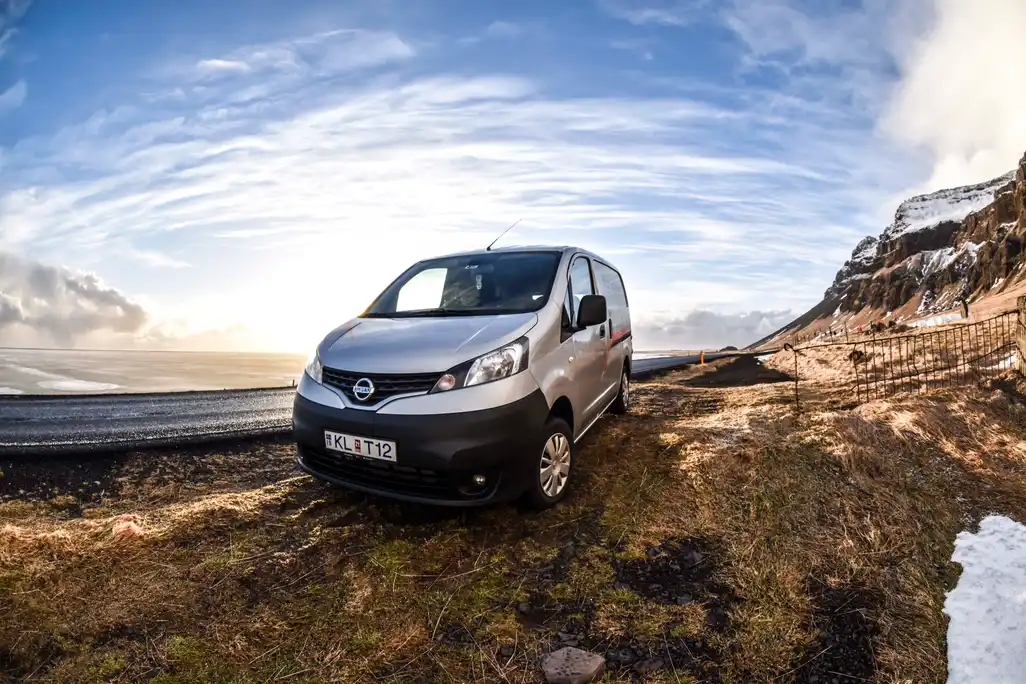
Larger 2WD Campervans with Just the Basics
These are campervans such as the Renault Trafic. These campers also tend to provide the bare basics, but with added creature comfort extras such as automatic heating. Once again, conversion is at the order of the day with everything folding into or out of to create a new space or piece of furniture.
These also don’t have bathroom facilities, but they generally tend to have something resembling a little kitchenette. Your rental agent will once again give you the option of having a gas stove and some camping cooking gear included in your rental package.
Will It/Won’t It Work for You?
- Just like the smaller campervans, these are 2-wheel drive vehicles with not a lot of clearance, so they can only be driven on paved and well-maintained roads (such as the Ring Road).
- These vehicles have slightly more sleeping space and can usually accommodate up to 3 people. This makes it a good option for a small family and friends traveling together (but, once again, ensure it’s friends who won’t mind sharing intimate space with one another).
- Storage space is also extremely limited with these vehicles (remember, the little bit of extra space mostly goes toward the additional sleeping space).
- Although you have a little kitchenette setup, you still don’t have a bathroom or full kitchen facilities, so you’ll still need to be more selective with your overnight stays and ensure campsites have these if you need them.
- Although slightly bigger than the smaller campervans, these vehicles are just as easy to navigate in our cities and towns, zipping in and out of smaller parking spots or traversing narrow streets.
- They are essentially on par with the smaller campervans when it comes to cost-efficiency, so they’re another great choice for those traveling on a tight budget.

The Largest 2WD Campervans with Just the Basics
These are campervans such as the Renault Master. These campers also have the bare basics, and a few with additional extras such as automatic heating, but the main focus is on maximizing sleeping space. Conversion is limited since most spaces are pretty much set in stone (which has both its pros and cons).
You’ll still have no bathroom or full kitchen facilities, but you’ll also find the little kitchenette setup in these vehicles. Your rental agent will once again give you the option of having a gas stove and some camping cooking gear included in your rental package.
Will It/Won’t It Work for You?
- The 4-wheel drive and higher clearance mean that you’re free to roam all the roads and routes on the island, including the F-roads.
- These vehicles focus on having more sleeping space and can usually accommodate up to 5 people. This makes it a good option for a larger family or group of friends traveling together (but, once again, you’ll need to choose these wisely since you’ll be in each other’s space so much).
- Storage space is almost extra limited with these vehicles due to the additional sleeping spaces. So, this is the type of vehicle each person is limited to a tiny backpack (wash and rewear will be your Icelandic mantra).
- Although you have a little kitchenette setup, you still don’t have a bathroom or full kitchen facilities, so you’ll still need to be more selective with your overnight stays and ensure campsites have these if you need them.
- These vans do tend to be larger than most, so even though you’ll still be able to navigate traveling around our cities and towns, zipping in and out of smaller parking spots or traversing narrow streets tends to be quite challenging.
- Of all campervans, these are probably the second-least cost-efficient due to their size and the additional load this vehicle has to carry. We’re not talking Kim-Kardashian-affordability levels, but we’ll definitely not recommend it for those traveling on an extremely tight budget.
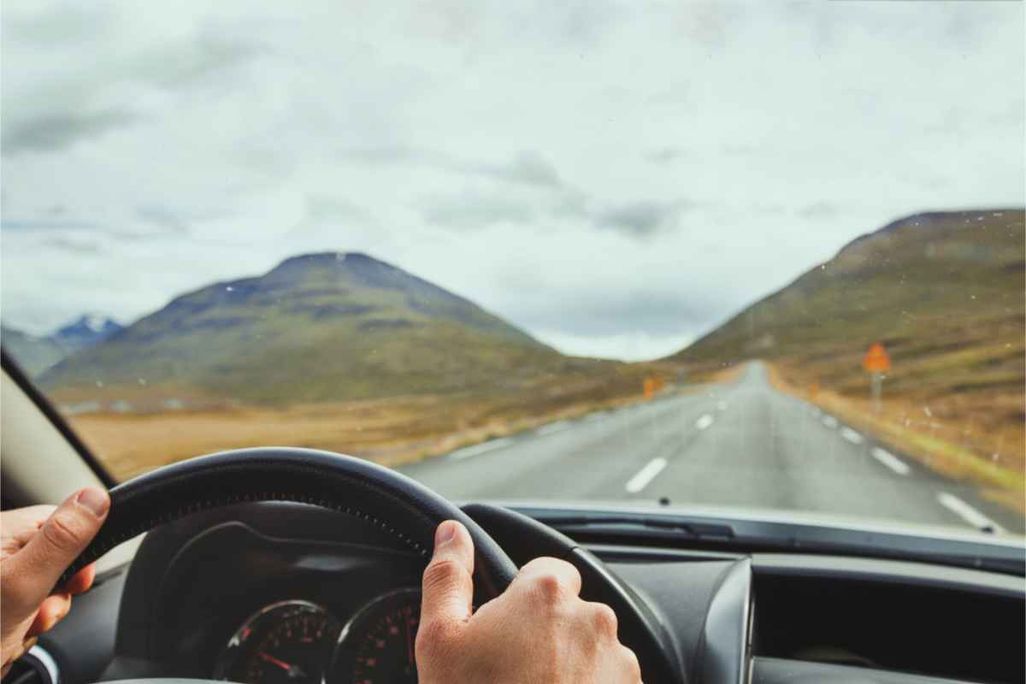
Smaller 4WD Campervans with Just the Basics
These are campervans such as the VW Transporter 4x4. Although these campers focus more on the bare basics, they do tend to have additional perks such as automatic heating.
There’s not a lot of conversion happening with these vehicles, which saves you the hassle and time, but also limits usage (for example, you won’t be converting your bed into a breakfast nook).
These vehicles still don’t have bathroom facilities, but they do tend to have something resembling a little kitchenette. Your rental agent will once again give you the option of having a gas stove and some camping cooking gear included in your rental package.
Will It/Won’t It Work for You?
- These campervans are 4-wheel drive with more clearance. Not only does that allow you to traverse even our more rough-and-tough gravel roads here on the island, but it also allows you to legally take on the F-roads (when they’re open, of course).
- These vehicles have slightly more sleeping space and can usually accommodate up to 3 people. This makes it a good option for a small family and friends traveling together (but, once again, ensure it’s friends who won’t mind sharing intimate space with one another).
- Storage space is also extremely limited with these vehicles (remember, the little bit of extra space mostly goes toward the additional sleeping space).
- Although you have a little kitchenette setup, you still don’t have a bathroom or full kitchen facilities, so you’ll still need to be more selective with your overnight stays and ensure campsites have these if you need them.
- Due to their size, these vehicles are just as easy to navigate in our cities and towns, zipping in and out of smaller parking spots or traversing narrow streets as they are driving our gravel roads.
- Although still a pretty cost-efficient option, a 4x4 vehicle does tend to work harder than your standard 2-wheel drive (how would you feel traversing a mountain compared to walking down a city street?). This means that fuel consumption will inevitably be more, although definitely not exorbitant. We’d recommend having a little bit more budget flexibility with these babies (in other words, you’re not just eating pasta and tomato sauce for the duration of your trip in order to rent one).

Bigger 4WD Campervans with Just the Basics
These are campervans such as the Mercedes Campstar 4x4/VW Ocean. These campers have all the bare basics with a few additional perks, such as automatic heating, but their main focus is on offering as much sleeping space as possible.
Despite there being more sleeping space available, there’s not a lot of conversion happening with these vehicles, since the additional sleeping space comes in the form of a roof tent.
These vehicles still don’t have any bathroom facilities, and anything resembling a kitchen begins and ends with a little kitchenette. Your rental agent will once again give you the option of having a gas stove and some camping cooking gear included in your rental package.
Will It/Won’t It Work for You?
- Just like their smaller counterparts, these campervans are 4-wheel drive with more clearance. So, the world is your oyster when going exploring here on the island.
- These vehicles focus on having more sleeping space and can usually accommodate up to 5 people. This makes it a good option for a larger family or group of friends traveling together (the ones you won’t want to murder after living in such close proximity to one another for days on end).
- Storage space is still limited with these vehicles. Remember, the little bit of extra space mostly goes toward the additional sleeping space, and the tent folds back down in the morning, so there’s no additional storage up there either.
- Although you have a little kitchenette setup, you still don’t have a bathroom or full kitchen facilities, so you’ll still need to be more selective with your overnight stays and ensure campsites have these if you need them.
- Because the additional sleeping spaces don’t add to the overall size of the vehicle (thanks, tent!), these are still fairly easy to navigate in our cities and towns, although zipping in and out of smaller parking spots or traversing narrow streets may become a little trickier.
- Of all campervans, these are probably the least cost-efficient due to the hard-working nature of a 4x4 and the load this vehicle has to carry up and down mountains (up to 5 people and their luggage, remember?). Although you won’t have to remortgage your house to afford the increased cost, we’d still only recommend this one for those not trying to explore the island with a very restrictive budget.
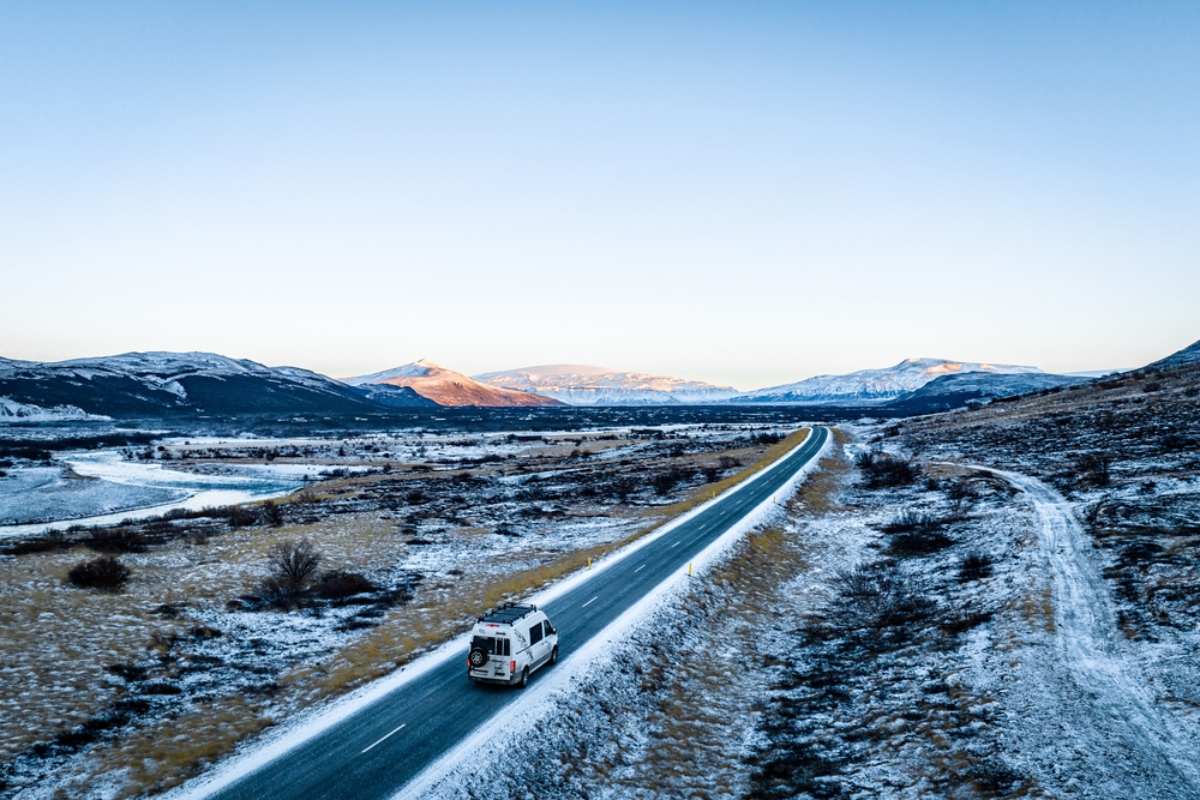
3. Understanding Iceland’s Unique Road Conditions
Iceland’s roads are just as diverse as its contrasting terrains. Here’s what to expect from our road conditions:
Paved, Main Roads
Iceland has plenty of paved roads that are well-maintained (meaning that they can essentially be driven all year round). These roads can be driven with a 2WD, as long as you have all the necessary winter accessories and gear during our colder season. These roads can be found in and around our cities and towns and include popular road trip routes like the Golden Circle and the Ring Road.
We do, however, forewarn those planning on road-tripping the Ring Road during our colder months that the roads in the north of the country (even the paved and well-maintained ones) can be trickier to navigate since weather conditions are much harsher in our northern regions. So, if you’re heading that way between October and March, a 4x4 might be a good idea.
Gravel Roads
We have plenty of gravel roads all around the island, especially in our more remote regions. It’s always a good idea to have a chat with your rental agent about your planned routes since gravel road conditions can vary.
Gravel roads to popular attractions tend to be very well-maintained and can easily be driven with a 2WD at a slow and steady pace. However, other gravel roads can be a bit more challenging and may require a 4WD and some additional insurance.

F-Roads
The F-roads are our really rough-and-tough roads, mostly found in the Westfjords and the Highlands. These roads cannot legally be driven without a 4WD, and for good reason. Steep inclines, uneven rocky roads with plenty of obstacles, and river crossings – this is what you can expect out on an F-road adventure.
Many find the F-roads incredibly rewarding. They not only speak to visitors’ adventurous sides, but also offer incredible views that not many visitors on the island get to experience.
Just note that the F-roads are subject to annual road closures since driving these roads during our colder months is simply too treacherous. This means that if you’d like to go on an F-roads adventure, you’ll need to visit during the warmer months when they’re open (typically from June to September).
4. Safety Tips for Driving in Iceland
If this will be your first time driving in Iceland, the following tips and advice will be helpful:
Preparing for Iceland’s Weather
- We have a local saying: “You can experience all four seasons in a day in Iceland.” So, irrespective of what season you visit us, you’ll need to be ready for sudden “mood” changes in the weather. The best way to stay one step ahead and not be taken completely off-guard is by keeping a close eye on the weather conditions and forecasts via the Vedur website, as well as our road conditions and road closures via the Umferdin website.
- Summer months offer the most daylight hours (20+), so if you’d like to have a jam-packed trip itinerary and will be driving for quite a few hours each day, this is probably your best bet. Winter offers an entirely different experience with our winter wonderland landscape. However, you’re looking at 4 hours of daylight a day mid-winter, along with road closures, so your driving options become more limited.
- Winter driving can also be a beast on its own, and probably not for those who consider themselves nervous drivers or are not used to the elements and conditions our winter season can dish up. There will be plenty of snow and ice on the roads, even though our well-maintained roads are regularly scraped and salted. Our legendary winds can also reach 35+ kilometers an hour speeds and have been known to rip car doors clean off their hinges! There may also be times when you face some of our blizzards.
- Sunglasses are a must, irrespective of the season. While it might be the sun shining directly in your eyes while driving in summer, it can be the blinding glare off the water, snow, and ice that takes you down during the colder months.
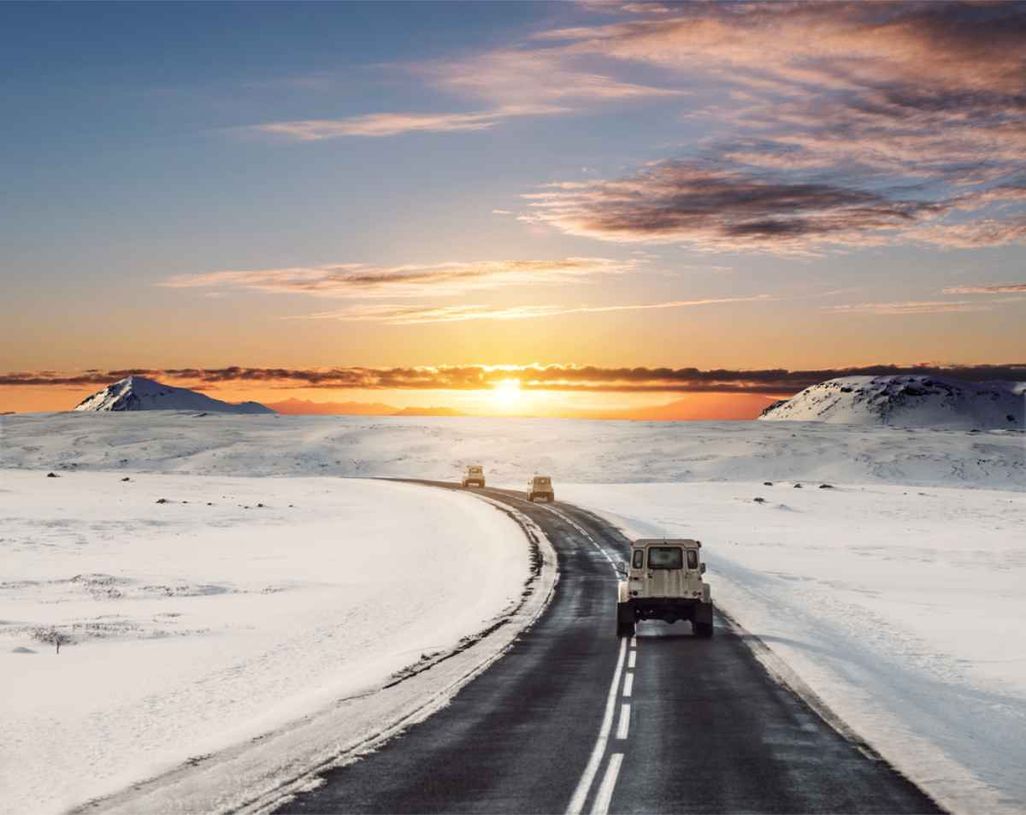
Navigating Gravel Roads and F-Roads
Some of the most rewarding roads here in Iceland are those considered our “roads less traveled,” often found in our more remote regions. But these roads also come with their own safety instructions:
Our Gravel Roads
- While most of our gravel roads are fairly even and well-maintained, there may be some that can be a bit more challenging. If you’re not driving a 4x4 and are concerned about potential damage to the car or your safety, rather turn back. Better to be safe than sorry.
- Keep a slow and consistent pace and avoid suddenly braking or accelerating – this could lead to you skidding and losing control of the vehicle.
- Keep a safe distance between yourself and other vehicles. This will not only ensure that things don’t go from bad to worse if you should start skidding, but it also avoids rocks and other debris picked up by other tires from hitting your vehicle.
- Ensure you have the right and sufficient insurance coverage for the roads you’re taking on (for the safety of your wallet). For example, if you suffer any damage due to the roads you’ve traveled and are not covered by your insurance policy, you’re going to be left with a pretty hefty bill.
- Ensure you have downloaded a few offline maps and have a couple of hard copies with you in the vehicle. Since many of our gravel roads tend to be in remote regions, you never know when technology or signal might fail you, and you don’t want to get lost.
Our F-Roads
- Don’t attempt these roads without a 4x4. Not only is it illegal, but you can bet your bottom dollar that a rescue team is going to have to come find you.
- As already mentioned, the F-roads are subject to annual road closures and can also have intermittent closures throughout the year due to bad weather conditions. Please don’t unilaterally decide to reopen them for yourself. You’ll be in HEAPS of legal trouble, and the odds of you waiting a long, looooong time for a rescue team to find you are pretty high.
- We also touched on the fact that you can find river crossings on F-road routes. Now, there are plenty of tips and tricks to a river crossing, such as crossing slightly diagonally, never switching gears or speeding up midway through, etc. But the number one rule of thumb is to ensure you don’t even begin that crossing if the water is too high and the current too strong. As a general rule of thumb, never attempt a crossing if the water is more than 50 centimeters (20 inches) deep.
- The same safety precautions mentioned for gravel roads regarding insurance and maps also apply to the F-roads.
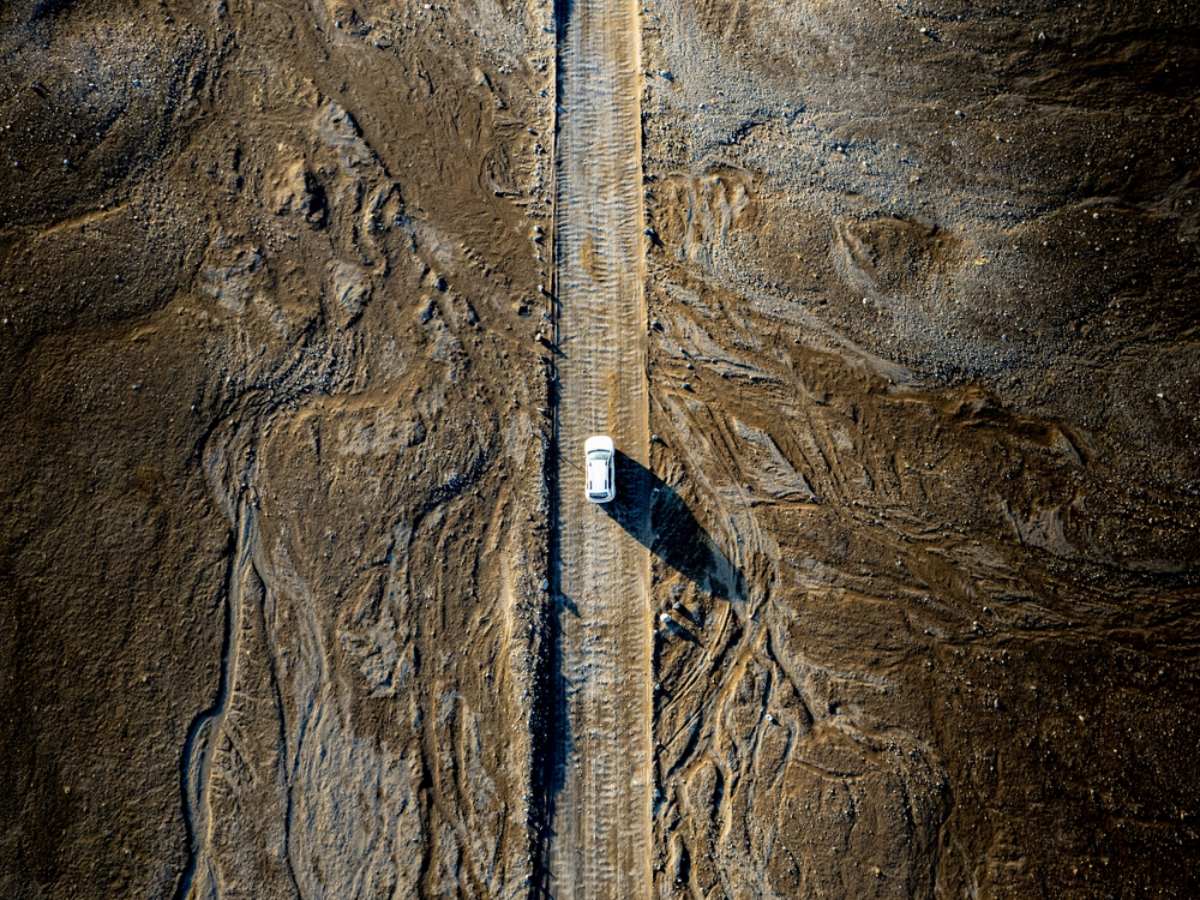
Managing Strong Winds and Single-Lane Bridges
Here’s how to take on our legendary winds and single-lane bridges:
Our Winds
- When our winds start howling, you’d better keep a tight grip on those doors whenever you open them. Otherwise, they might go flying Wizard of Oz style.
- Ensure that you’re always parked into the wind (whether in parking or camping spots), so there’s less resistance and you don’t sleep feeling like you’re on a boat out to sea.
- Be careful of those sudden gusts while driving. As soon as you can feel the wind start to pick up, slow down and ensure you have both hands firmly on the wheel.
Our Single-Lane Bridges
- Our single-lane bridges are mostly found in the countryside and in remote areas. If you come across one in your travels, just remember that the rule of thumb is that whoever arrives at the bridge first gets to cross first.
- During our peak seasons, queues may form at these bridges. Please practice patience and take in your breathtaking surroundings rather than sitting stewing and glaring at the other drivers.
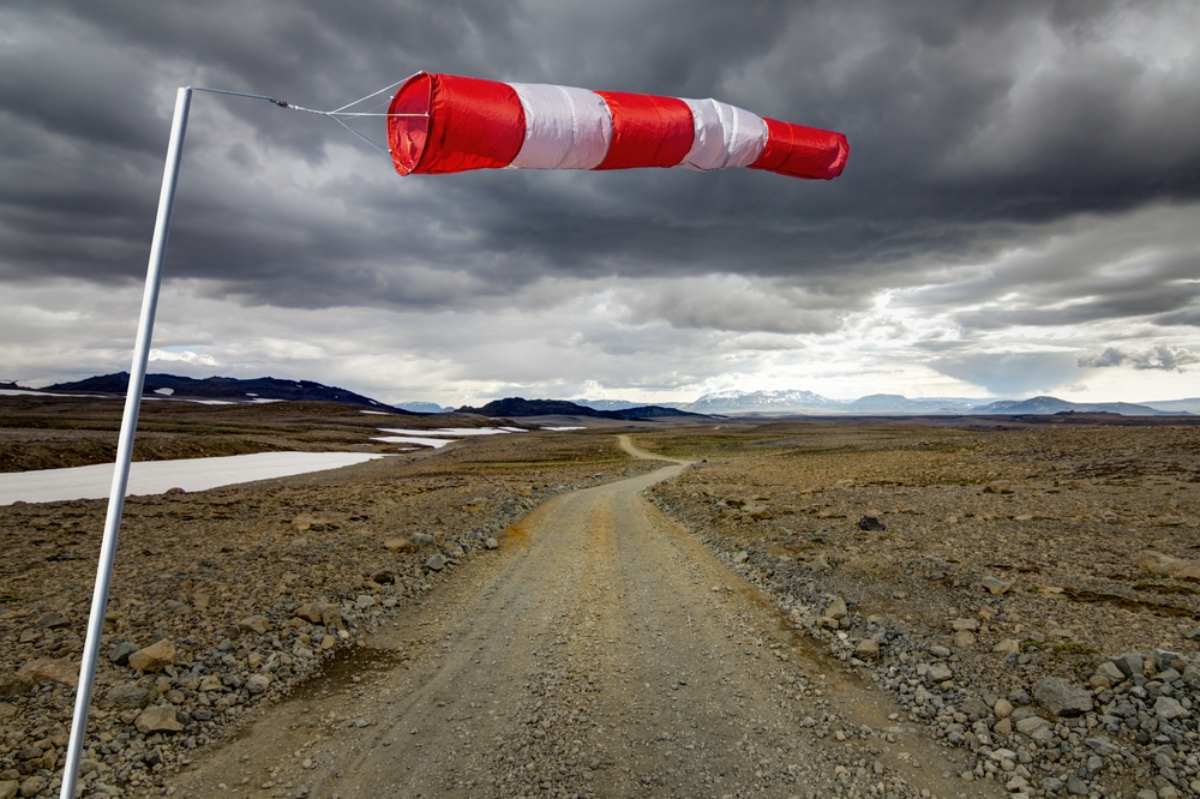
5. Practical Advice for Campervan Travelers
When it comes to parking, camping, and filling up, things in Iceland may not be what you’re used to back home. Here’s what you need to know:
Parking Regulations and Best Practices
- It is illegal to park anywhere that’s not a designated and clearly marked parking spot. That includes stopping along the side of the road to take a “quick” snapshot.
- Parking spots are not camping spots, even if you’re in a campervan. If it doesn’t clearly state that it’s overnight parking, don’t take the risk of finding yourself in some legal hot water.
Campsites and Overnight Parking Options
- While there are many campsites open all year-round, some are closed throughout our colder months, so please double-check and research possible overnights during this time beforehand so you don’t find yourself in a predicament.
- We have EXCEPTIONAL discount offers in the form of the Camping Card. But this card is seasonal, so unless you’re planning on traveling between May and September, it makes no sense to get it.
- Iceland offers a wide variety of camping and overnight parking options, so check which suits your needs best before just booking a spot. For example, some may have additional amenities and activities catered around family stays (playgrounds, minigolf, etc.) while others may be more primitive and not even have electricity.
- The easiest way to research and book camping and overnight parking options is to use the Parka.is and Tjalda.is apps and websites.
- As we already touched on, wild camping has been an illegal no-go since 2015. However, with the EXPLICIT permission of a landowner, you’re allowed to park/camp on their private land for up to 48 hours.
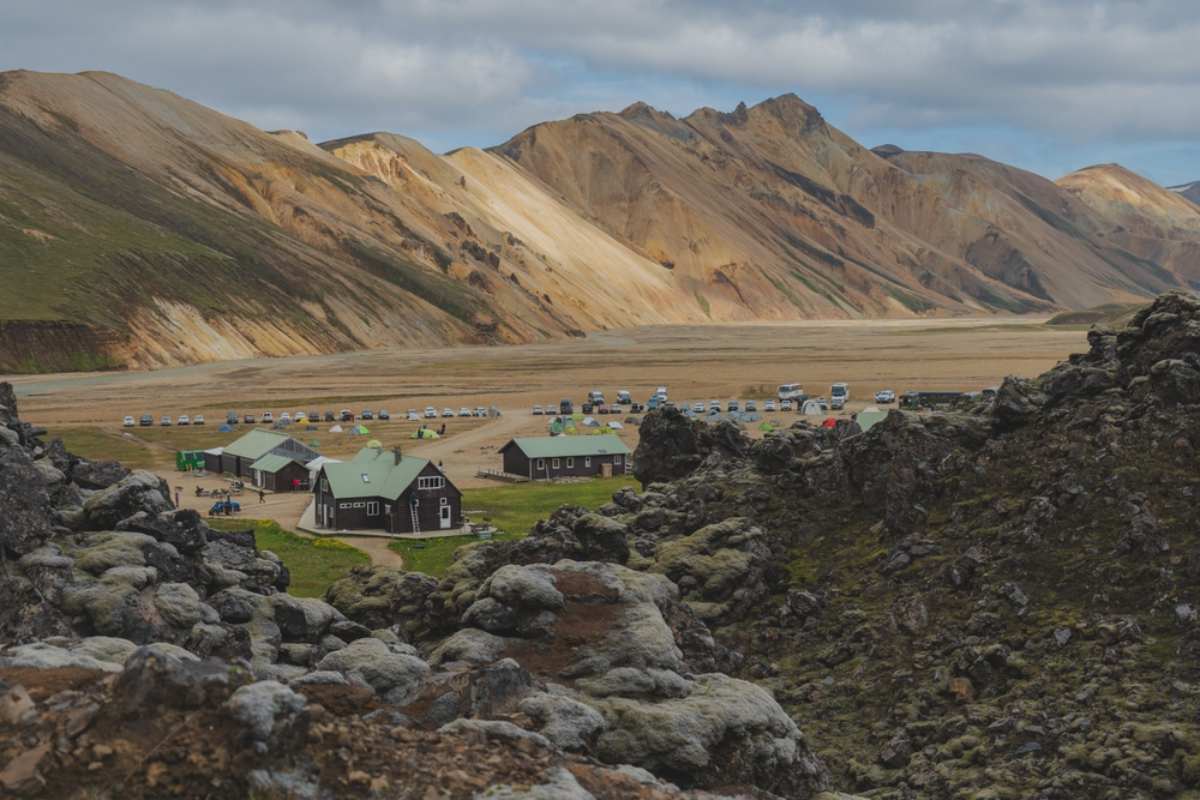
Fueling and Supply Stops in Remote Areas
- Local discount cards, such as the Camping Card, also offer discounts on gas, so it’s a double win.
- Rental agents also often have agreements with gas stations around the island, which means that fueling up at their partner stations could also save you a few bucks.
- The prices of gas differ from gas station to gas station (even if they’re the same brand), so do your research ahead of time to get the best deal. Between us, Costco in Reykjavik is known as the cheapest gas station here on the island.
- Most of our gas stations are self-service, so you’ll need to be prepared and not sit in your camper waiting for assistance like a muppet (you’ll be waiting for a looooong time).
- Be sure to fill up in our larger cities and towns if you know you’ll be heading out to our more remote areas. Not only do gas stations become few and far between in these regions, but prices also go up (good ol’ supply and demand basics). The same goes for supplies, especially if you’ve got an affinity for already rare products.
- Ensure you buy a few extra rations of food that don’t spoil easily (energy bars, nuts, dried fruits, etc.) This is so you have backup options when you realize you missed an opportunity to stock up or find yourself in an emergency situation.
- Please don’t ever waste your money by buying bottled water (you’ll also get some strange looks if you do). Iceland has some of the purest water in the world coming directly out of the taps, so simply top up a refillable water bottle as you go.

6. Rules and Regulations for Driving in Iceland
While we’re sure you understand the basics of not drinking and driving or adhering to speed limits, the finer details may be different from what you’re used to back home. Here’s what you need to know:
Speed Limits and Road Sign Etiquette
- Although speed limits will be indicated by road signs along the way, you can prepare yourself for the following:
- Between 30 and 50 kilometers an hour (19 and 31 miles an hour) in urban and residential areas.
- 80 kilometers an hour (50 miles an hour) on gravel roads (of course, you’ll still need to lower this even further based on the condition of the road).
- 90 kilometers an hour (56 miles an hour) on our paved roads outside of cities and towns (what you’d probably call our version of “highways”).
- You will see animal crossing warning road signs at certain places, but please don’t think these are the only places animals cross. We have plenty of free-roaming wildlife, so you must always be alert.
- We don’t have road signs for this one, so you’ll need to be aware from the moment you drive off the rental lot. Keeping headlights on while driving is mandatory here in Iceland, irrespective of whether it’s day or night. This not only allows you to see better, but also makes you more visible to others.

Off-Road Driving Laws
We already mentioned our off-road driving laws and that parking, camping, and DIYing your own roads are out of the question. There are two reasons why we have such strict off-road laws. Firstly, it’s for your own safety.
This is the Land of Fire and Ice, and we have all sorts of weird, wonderful (and dangerous!) wonders that aren't always clearly visible (just ask Ed Sheeran). Secondly, we have a very sensitive ecosystem that deserves to be protected. For example, we have a rare type of moss that can take up to 10 years to recover from damage (if it even manages to recover at all!).
Emergency Numbers and Roadside Assistance
Your rental agent will be on call 24/7; however, you’ll also have a few other emergency backups in the form of your insurance (both vehicle and travel) as well as the Icelandic emergency services, who address call-outs ranging from accidents and medical emergencies to fires and breakdowns.
So, be sure to save all these numbers on your phone for those times you’re too flustered to search or remember. The number to the Icelandic emergency services is 112.
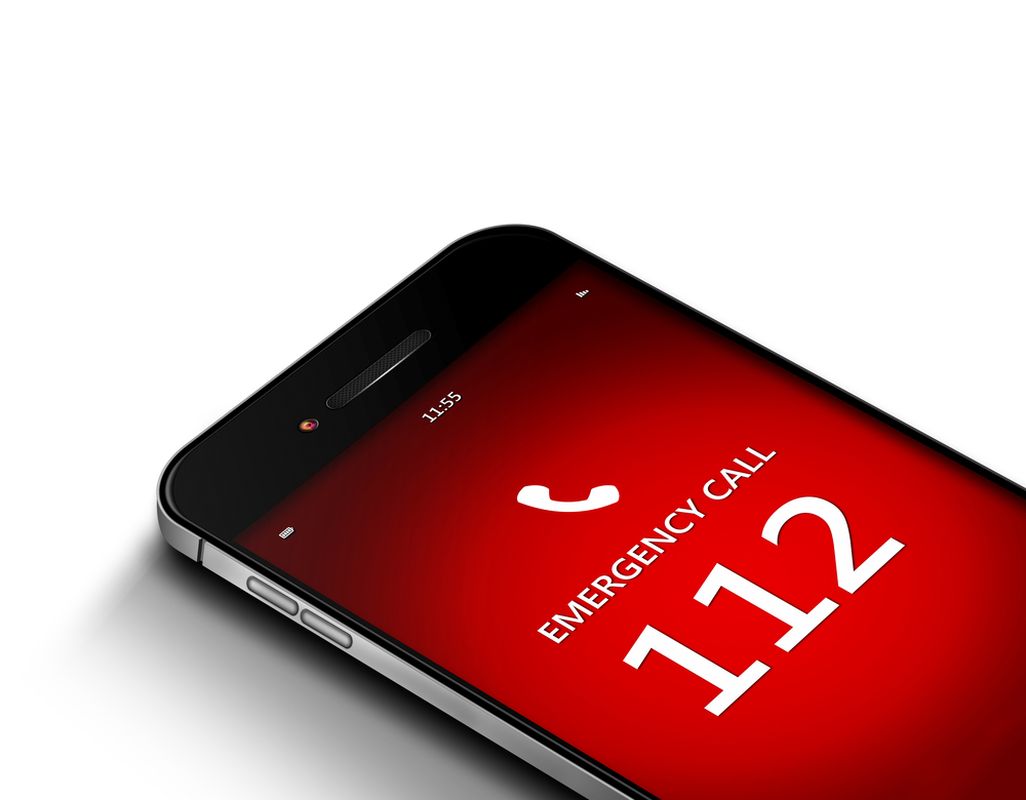
7. Frequently Asked Questions About Driving in Iceland
Below are the answers to a few of the frequently asked questions we receive about driving in Iceland:
Can You Drive in Iceland Without Experience in Winter?
Absolutely! There’s a first time for everything, right? As long as you drive with caution, listen to the advice we’ve provided in our guide, and adhere to the Icelandic rules of the road, you’ll be driving like a local in no time!
Are Campervans Allowed on the Ring Road and the F-Roads in Iceland?
Since the Ring Road is a paved, main road, you’ll be able to drive all types of campervans on the route. You’ll even be able to do so all year round as long as you’ve got all your winter gear and accessories for the colder months, and come prepared for our harsher northern regions.
On the F-roads, however, you’ll only be allowed to drive with a 4x4 campervan, and since the roads tend to be very narrow in places, you’d need to pay special attention to the size of your camper (a beast of a camper is not gonna work on these roads). You must also keep in mind that most of the F-roads are only open from June to September, so you’ll need to plan your campervan road trip accordingly.

What Should You Do in Case of Road Closures?
The first thing you need to do when it comes to road closures in Iceland is to be prepared for them. Do your research before traveling to Iceland, so your road trip doesn’t end before it even begins due to annual road closures. Also, keep your itinerary flexible and keep a few backup or indoor attractions/activities up your sleeve for the days the weather turns on you.
8. Final Thoughts on Driving in Iceland with a Campervan
Campervan travelers don’t just come to see and do things here on the island; they truly immerse themselves in the landscape and make the entire experience all about the journey.
With the focus removed from simply getting to point A or B, campervanners are able to appreciate driving through vast lava fields, waking up to waterfalls outside their windows, and take in scenic mountain views, whenever and wherever they’d like (and at a fraction of the cost a traditional Icelandic holiday would’ve cost). What’s even better is that a campervan allows you to road trip around the country, irrespective of the season.
And, as long as you come prepared, driving in Iceland with a campervan during the winter can offer an entirely different, magical winter wonderland experience with all sorts of exciting winter-specific activities than the other seasons.
So, if you think you’re game for driving in Iceland and captaining your own adventure in a camper, it’s time to start planning that trip, rent your campervan, and begin the journey of a lifetime! Happy travels!



















